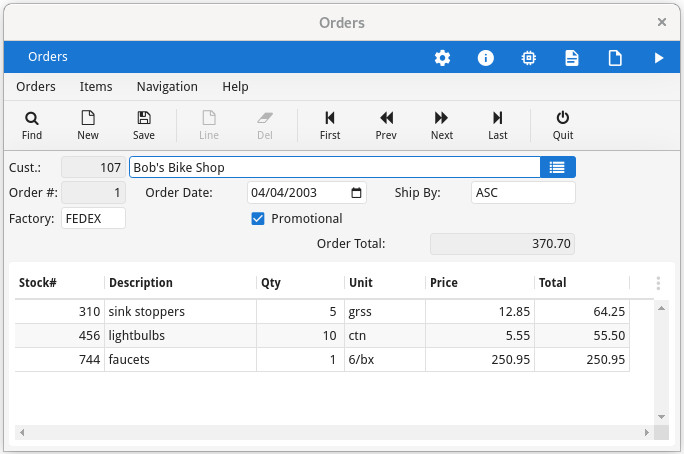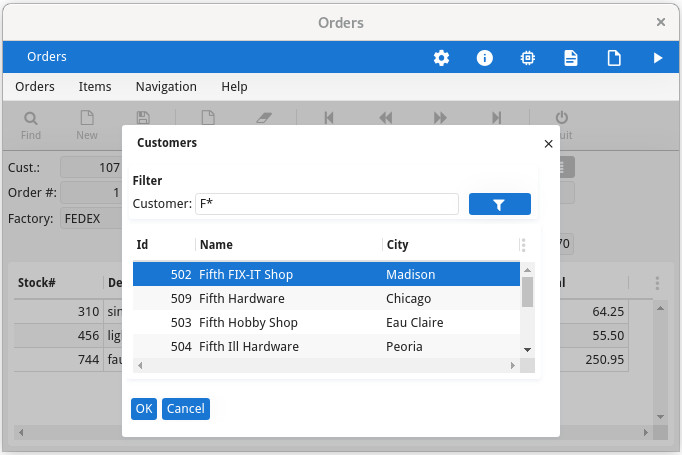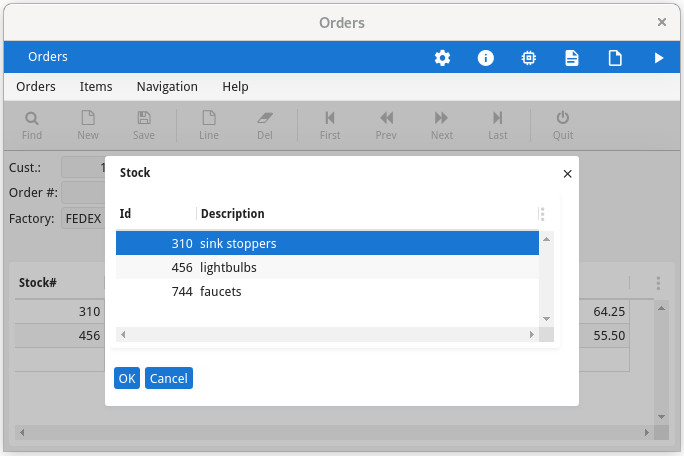Tutorial Chapter 10: Multiple Dialogs
This chapter shows how to implement order and items input in a
DIALOG statement. The code makes both order and item input fields active at the
same time.
The example discussed in this chapter is designed for the input of order information (headers and
order lines), illustrating a typical master-detail relationship. The form used by the example
contains fields from both the orders and items tables in the
custdemo database. In this program the end user can input order and items data
simultaneously, because the form is driven by a DIALOG instruction.
The DIALOG instruction body can define INPUT,
CONSTRUCT, DISPLAY ARRAY and INPUT ARRAY
sub-dialogs blocks. All the form fields controlled by these sub-dialogs will be active at the same
time.
When the program starts, the existing rows from the orders and
items tables have already been retrieved and are displayed on the form. The user
can browse through the orders and items to update or delete them, add new orders or items, and
search for specific orders by entering criteria in the form.

There are different ways to implement a Master/Detail form with multiple dialogs. This chapter shows one of them. Genero provides the basics bricks, then it's up to you to adapt the programming pattern, according to the ergonomics you want to expose to the end user.
Customer selection and stock item selection are displayed as popup windows:

